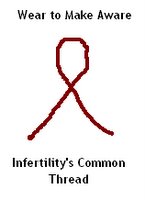by T
Why Would You be Doing a Hysteroscopy?
Hysteroscopy, when your cervix is dilated and a small set of surgical tools is inserted into the uterus, is usually recommended when your doctor has noticed something strange during an HSG or saline sonogram. Sometimes both these tests are normal, but other issues (pregnancy loss, bleeding, IVF failure) may indicate hysteroscopy. Hysteroscopy allows your doctor to envision the uterine lining using fiber optics, after pumping the womb full of sterile air or fluid. She can then easily detect any irregularities. Septums, uterine polyps (benign overgrowths of the lining), and some fibroids can be carefully removed. Hysteroscopy is considered the gold-standard treatment for growths like polyps, which are too often missed during blind D & Cs.
What You Can Expect
Depending on where the procedure falls in your cycle and why it’s being done, you may be prescribed birth control pills to keep your lining thin and make it easier for your doctor to figure out what’s going on. I was able to schedule mine for early enough in my cycle to avoid this.
Most hysteroscopies are performed as outpatient surgeries under general anesthesia. This means you will need someone to take you to and from the surgery, and you will have to fast. Make sure you understand exactly what’s expected by the particular surgical center, as they often have varying protocols.
If, like me, you are scheduled for an afternoon slot, chug as much water as you can right up to the midnight cut off. Also, it’s good to avoid any anesthesia-related regularity issues by taking a stool softener and/or eating ample fiber in advance. The cramping post-procedure can make constipation a real downer, to put it mildly.
Once you’ve arrived at the surgical center, you’ll have an IV started and may be given a pregnancy test. After your doctor and anesthesiologist have spoken to you briefly to review what’s about to happen, you’ll be taken into the operating room. A few seconds after the anesthesiologist administered a drug into my IV, I was out like Rip van Winkle. Depending on the timing, your doctor might speak with you or your companion about the results of the procedure. In my case, my husband got the report, as I was still down for the count. If you think you’ll have questions that your companion won’t think to ask, write them down.
Though hysteroscopies do not involve any incisions, the dilation and activity in the uterus do lead to unpleasant cramping, pain, and bleeding. I was given naproxen (Aleve) to take for the cramping, as well as hydrocodone for pain. Even if you think you won’t need them, fill these prescriptions ahead of time if possible. The cramping may not start right away, but it will come and you’ll welcome the relief.
Though you’ll likely get a pad from the center to deal with the bleeding, I brought along my favorite kind, just for comfort’s sake. You may also want to wear comfy clothing like a loose dress or sweats and take a cardigan, hoodie, or other cozy wrap to keep you warm before and after surgery. Bring your favorite pillow to keep the pressure of the seat belt off your belly for the ride home, and snacks for the trip home like juice, yogurt, and water. Stock up beforehand on some tasty, nourishing, fairly bland and soft comfort foods for the evening after surgery. Some gals even suggest throwing a little get together, though I personally was content to sprawl on my pillows and watch DVDs.
After a few days, you’ll likely be feeling pretty good, if not completely back to normal. If you can manage it, take it easy the day of and the day after the procedure. Get some good books, good movies, treats, and take really good care of yourself. You may have some spotting or bleeding for a few days afterward.
Ask your doctor before you go under about post-op follow up, signs that you need additional medical assistance, and how long you should avoid tampons, sex, and any other cervical annoyances. Though I can’t recall getting specific instructions, some online research showed that two to three weeks of pelvic rest was best. Anything removed from your lining will likely be sent to a pathologist for testing, though malignant growths are extremely rare in pre-menopausal women. Though some women have mentioned that they’ve had unusual periods following the procedure, I only noticed that mine was a little later and lighter than usual.
We discovered that I had polyps thanks to a saline sonogram, after a normal HSG. Polyps were suspected in my case because of luteal phase spotting. If you have persistent, regular spotting but a normal HSG, get a saline sonogram just in case. It may give you additional information, and it’s basically painless compared to the HSG.
I combined my hysteroscopy with a laparoscopy, an increasingly common diagnostic combo in infertility. This two-birds-one-stone approach seemed to work very well: I was already out cold, and my doctor could give us the full picture of my pelvic and uterine health, thus increasing my peace of mind. In the end, three small benign polyps were removed, and two spots of endometriosis blasted with a laser. The entire procedure took less than an hour, all told.
With the addition of the lap, I had more pain than you normally would with hysteroscopy alone, due to the incisions and the gas used to inflate the abdomen.
Rest is the most important part of recovery. I slept and lounged my way through two days, when I started to feel much better and no longer needed the pain medications. Any friends or family willing to contribute meals and keep you resting should be heartily encouraged. The more you sleep now, the better you’ll feel in the long run.








2 comments:
Thanks for such a great run-down of the procedure! I'm having a hysteroscopy in a few weeks and feel more prepared now. :)
I had a "fiber optic Hysteroscopy" last year - nothing but 800 mg Ibuprofen. Total cake!
Post a Comment